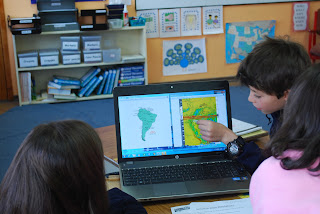 |
| Field Trip: The Water Treatment Plant |

Density (by I.E., S.N., I.M., J.S. and L.M.Q.):
We are going to teach you about density. Density is when molecules stick or
don’t stick close to together. Our class did various projects on density, such
as an egg experiment. The egg experiment was when we put an egg in fresh water
first, and then salty water later to see in which type of water it would float.
That has to do with density, because when we put the egg in fresh water it
didn’t float because the molecules in the egg were denser than the molecules in
the fresh water. But the egg started to float in the salt water because the
salt made the water less dense than the egg. Here is another explanation: when
you put a ball filled up with air in a pool, it floats because the air is less
dense than water. But when you put a ball filled up with nails in a pool, it
will sink because the molecules in the nails are denser than the water
molecules. So now you know what density is, and if you would like to, go ahead
and try these experiments at home!
 Surface tension (by A.N., J.M.C., E.S., and M.M.). Surface
tension means: When something floats in water, but if you push it down it will
sink if the molecules in the object are denser than the water molecules. One
day we did an experiment about putting a paper clip in water, but it sank and
Ms. Margot said, “If you want to, you can try it by yourselves at Centers Time”.
When Jose Miguel tried it, the paper clip floated and it looked like it had a
skin on the top of the water. It was very weird because we didn’t see air in
the paper clip to help it float. We also tried another experiment that was
about putting water drops on top of a penny, and we got the penny to hold about
28 drops. We found out that the water “held on” to the penny because of surface
tension and adhesion (when water sticks to other things). That’s how surface
tension works.
Surface tension (by A.N., J.M.C., E.S., and M.M.). Surface
tension means: When something floats in water, but if you push it down it will
sink if the molecules in the object are denser than the water molecules. One
day we did an experiment about putting a paper clip in water, but it sank and
Ms. Margot said, “If you want to, you can try it by yourselves at Centers Time”.
When Jose Miguel tried it, the paper clip floated and it looked like it had a
skin on the top of the water. It was very weird because we didn’t see air in
the paper clip to help it float. We also tried another experiment that was
about putting water drops on top of a penny, and we got the penny to hold about
28 drops. We found out that the water “held on” to the penny because of surface
tension and adhesion (when water sticks to other things). That’s how surface
tension works.
 |
| Field Trip: The Water Museum |
Capillary action (by J.C., L.M.,
J.V. and C. V.). One day we did an experiment about capillary action. The
experiment we did was like this: you get
a paper towel, 2 plastic cups, and one cup with water and another one that is empty. Then we had to twist the paper towel tightly
and put it half way in the cup with water, and half way in the empty cup. Ina few minutes we saw what happened…the wet
end got to the dry end, and the empty cup filled up with water! The next
morning both of the cups had the same amount of water! Because of adhesion, the
water got “sucked up” by the paper!








 Surface tension (by A.N., J.M.C., E.S., and M.M.). Surface
tension means: When something floats in water, but if you push it down it will
sink if the molecules in the object are denser than the water molecules. One
day we did an experiment about putting a paper clip in water, but it sank and
Ms. Margot said, “If you want to, you can try it by yourselves at Centers Time”.
When Jose Miguel tried it, the paper clip floated and it looked like it had a
skin on the top of the water. It was very weird because we didn’t see air in
the paper clip to help it float. We also tried another experiment that was
about putting water drops on top of a penny, and we got the penny to hold about
28 drops. We found out that the water “held on” to the penny because of surface
tension and adhesion (when water sticks to other things). That’s how surface
tension works.
Surface tension (by A.N., J.M.C., E.S., and M.M.). Surface
tension means: When something floats in water, but if you push it down it will
sink if the molecules in the object are denser than the water molecules. One
day we did an experiment about putting a paper clip in water, but it sank and
Ms. Margot said, “If you want to, you can try it by yourselves at Centers Time”.
When Jose Miguel tried it, the paper clip floated and it looked like it had a
skin on the top of the water. It was very weird because we didn’t see air in
the paper clip to help it float. We also tried another experiment that was
about putting water drops on top of a penny, and we got the penny to hold about
28 drops. We found out that the water “held on” to the penny because of surface
tension and adhesion (when water sticks to other things). That’s how surface
tension works.